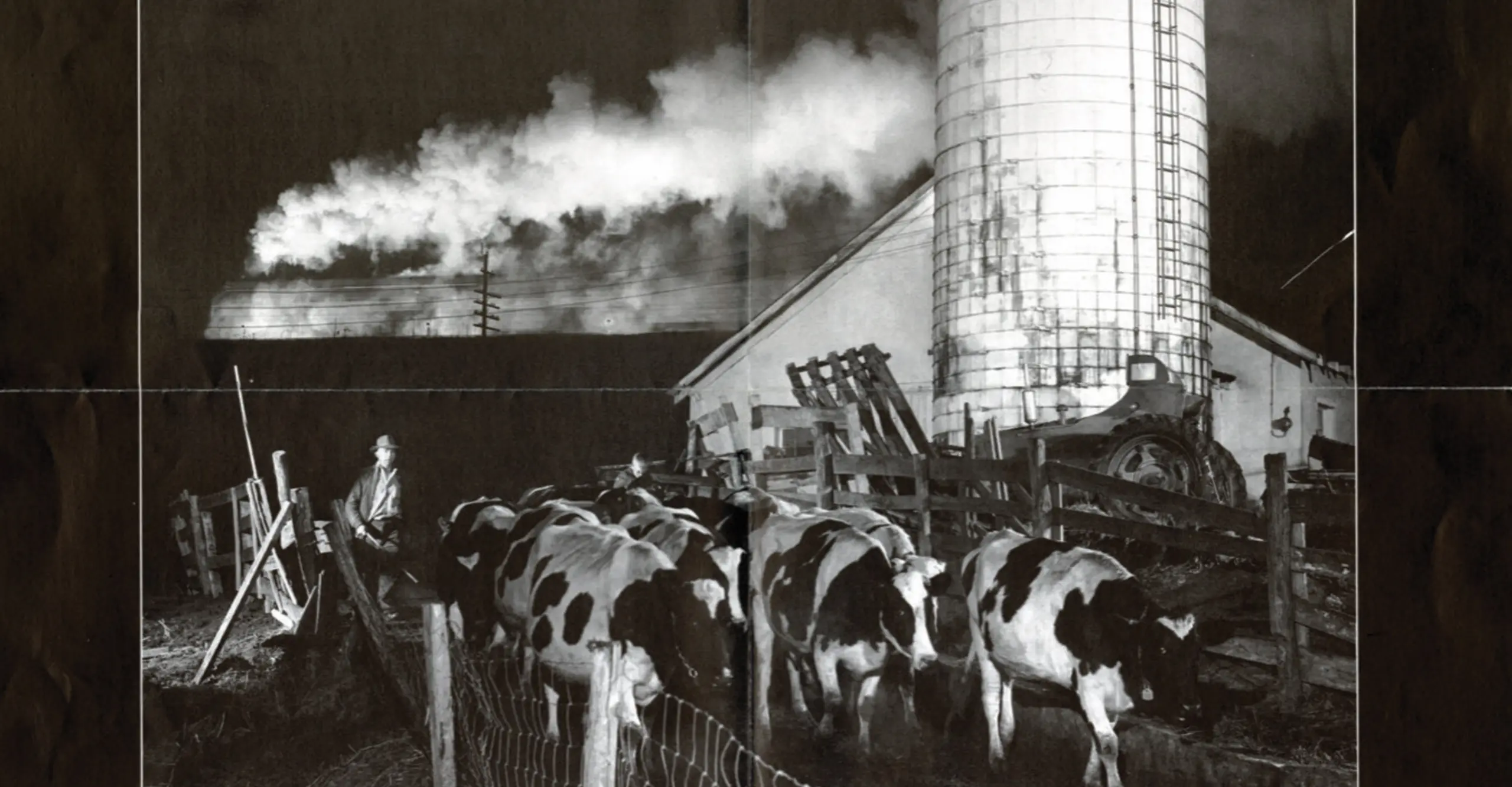The Norfolk and Western Railway was built in the 1850's to run from Norfolk, Virginia on the Atlantic coast across the Blue Ridge Mountains and the Alleghenies as far as Columbus, Ohio, and from Hagerstown in the North to Winston-Salem in the South. Photography is bound up with the early pioneering days of the railroad in America, and it is fitting that the last days of steam locomotion should have been so extensively recorded by Winston Link just over a hundred years later.
Winston Link was born in 1914 and trained as a civil engineer before becoming a photographer. After his highly specialised research work during the 2nd World War he developed the skills of multiple flashlight photography which were to prove invaluable when in 1955 he discovered the Norfolk & Western Railway. The result is an unparalleled collection of 2032 negatives made over a period of five years from 1955 to 1960, which documents various aspects of the life of a railroad. What distinguishes Link's work from conventional railway photography is its human context and the dramatic effect produced by photographing at night. Many of the photographs depict the trains in motion at night through the framework of some rural scene or event; the drive-in cinema at laeger, the gas station at Vesuvius, the swimming pool at Welch, West Virginia, or the silo near Shawsville in the Roanoke Valley provide a lively social perspective. The timeless character of the rural community coincides with the momentary, fleeting passage of the steam trains to produce an often startling incongruity.
The consummate technical skill of Winston Link is matched by an imaginative insight which enables him to previsualise a photograph. But the element of risk, spontaneity and surprise is always there. In one of his notebooks he writes of the laeger Drive-in photograph; Since I could only see the headlight of the locomotive in total darkness. I did not know until the flash was fired that I had captured this prize, Class A engine with beautiful smoke and all of it in range! In addition to this virtuosity there is a subtlety of reference in these photographs some of which do not even show the trains. The photograph of the interior of the store at Green Cove, Virginia which doubles as a waiting room is a masterpiece of discretion and visual description reminiscent of the work of Norman Rockwell. The portrait of old folk on the porch of a house at Lithia, Virginia is preserved from sentimentality by the sinister presence of the train in the background.
Above all the precision of composition and lighting gives to these images a strength which prevents them from being merely exercises in nostalgia. In the photograph of a siding at Rural Retreat, Virginia the clarity of form and intensity of light bring to mind the paintings of Edward Hopper. The man in the picture is situated at its vanishing point so that all the diagonal lines converge to make him the focus of attention, whilst the white plume of smoke has the effect of balancing the white facade of the weather-boarded building. The richness of this work resides in the simplicity and naivety of vision and in its evocation of a time past. Link pees us a vernacular portrait of rural American life in the late 'fifties, whose charm and optimism contrasts with Robert Frank’s bleak vision of urban alienation in The Americans made at the same time.
Although they are not always the focus of attention the trains are the dominant motif, recurring with a regularity which verges on the surreal. The most bizarre image is perhaps the photograph of a train steaming up the main street of Northfork, West Virginia, while through a window in one of the houses a man can be seen quietly reading. To light a moving train at night requires considerable expertise, and some idea of the scale of the enterprise is provided in the photograph of Lurk and his assistant with some of their equipment. Finding the Iocation, setting up the apparatus and waiting for the train to arrive would often take up to a week, but after a while the value of the project began to be recognised and Link was given a key to the railway 'phone system, so that he could orchestrate the operation, and ask engine drivers to back up for a second run if need be. The logistical problems were immense, but the results appear to have been effortlessly achieved.
Some of the photographs taken during the day depict rural life in a part of the line which only ran during the daytime, and they reveal how much the splendour of the trains is dramatised by the artificial light and the night itself. The photographs have a theatrical quality which in no way detracts from their truth to life, but which contributes to this and portrait of steam trans during the period of their gradual demise.
The Photographers Gallery would like to thank Winston Link for the loan of his prints and for all his help in mounting this exhibition.
RUPERT MARTIN Exhibition Organiser
Text from catalogue produced for the original exhibition
Information for this exhibition is currently incomplete or yet to be catalogued.
We’re working to document our past programme using material in our Archive, and so information on this exhibition may become available in the future.
Can you help us? If you visited or were involved with this exhibition and have information you can share with us, we’d love to hear from you. You can get in touch using the details below.
Likewise if you spot anything incorrect, have any further information that would improve this listing, or want to share a memory of TPG please contact us at tpg.archive@tpg.org.uk
For further details on our past programme, visit our Archive and Study Room.


